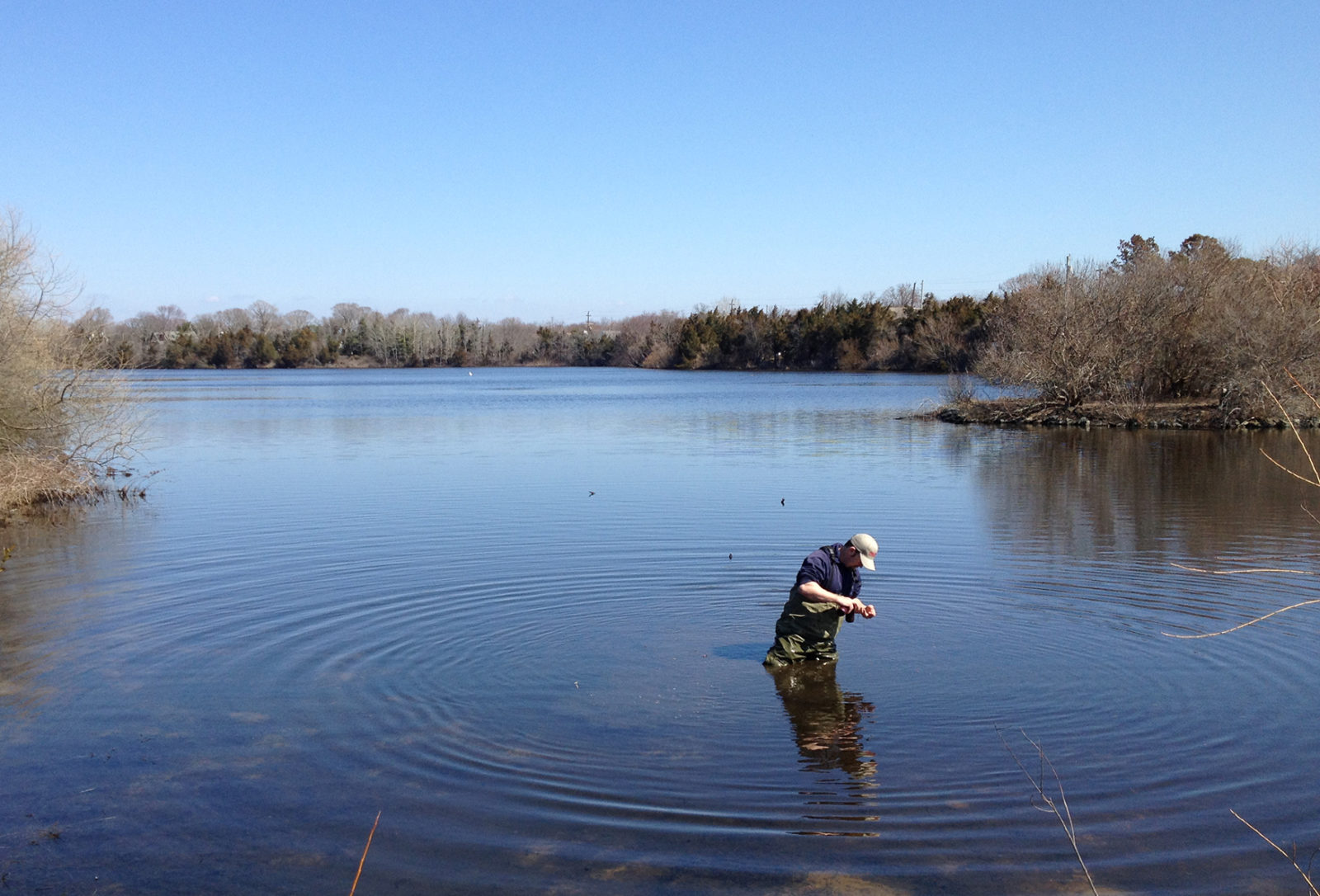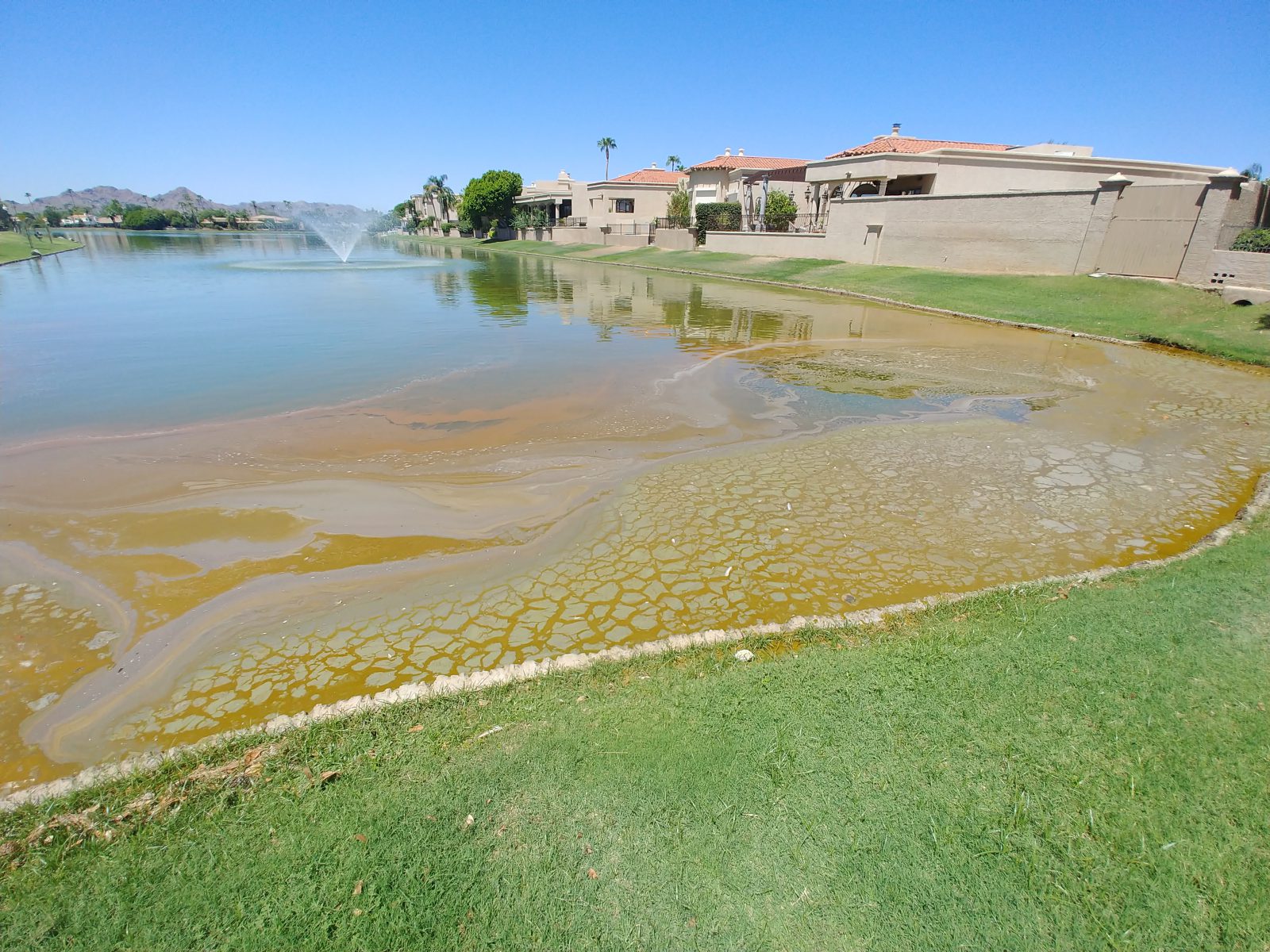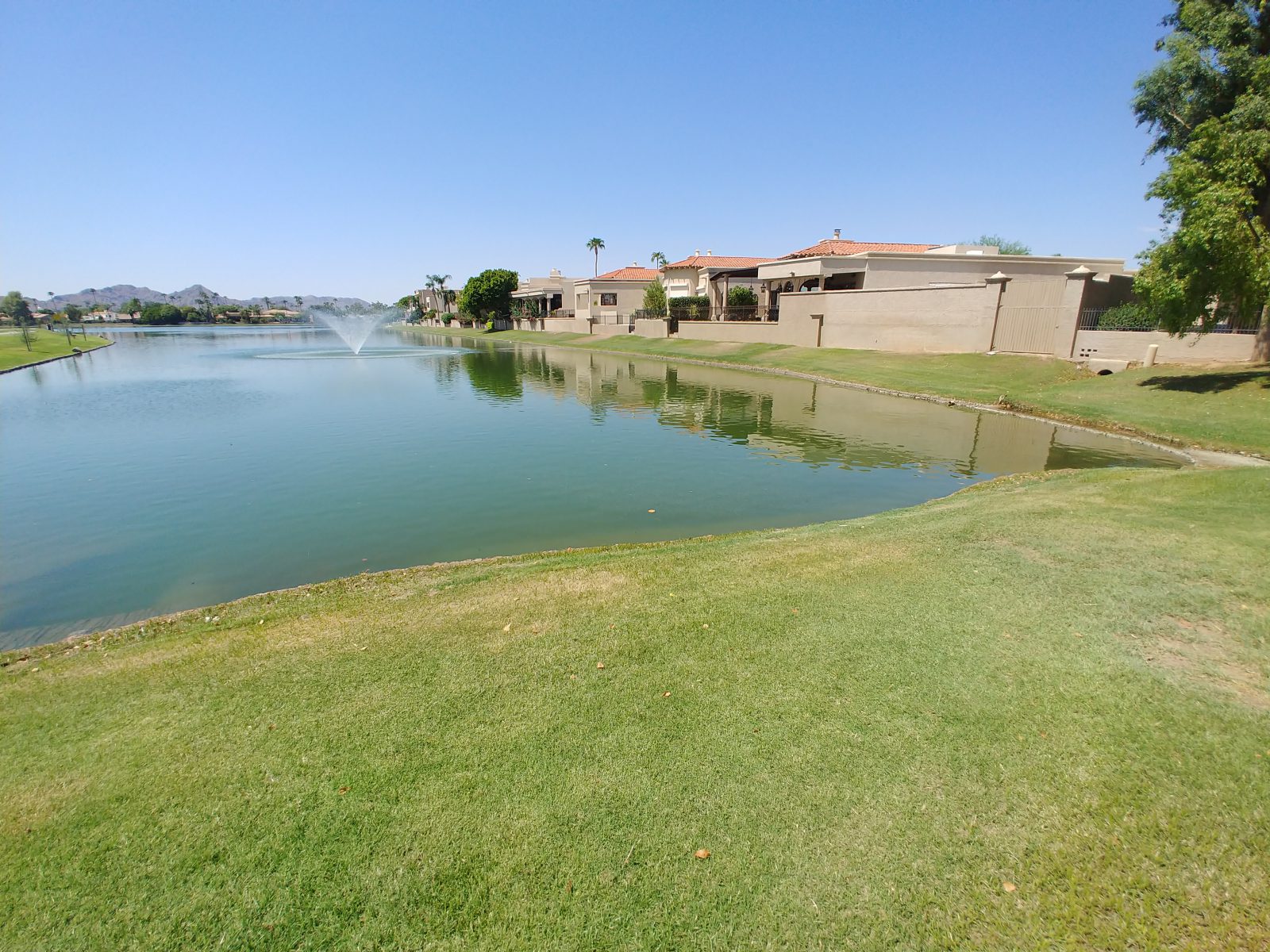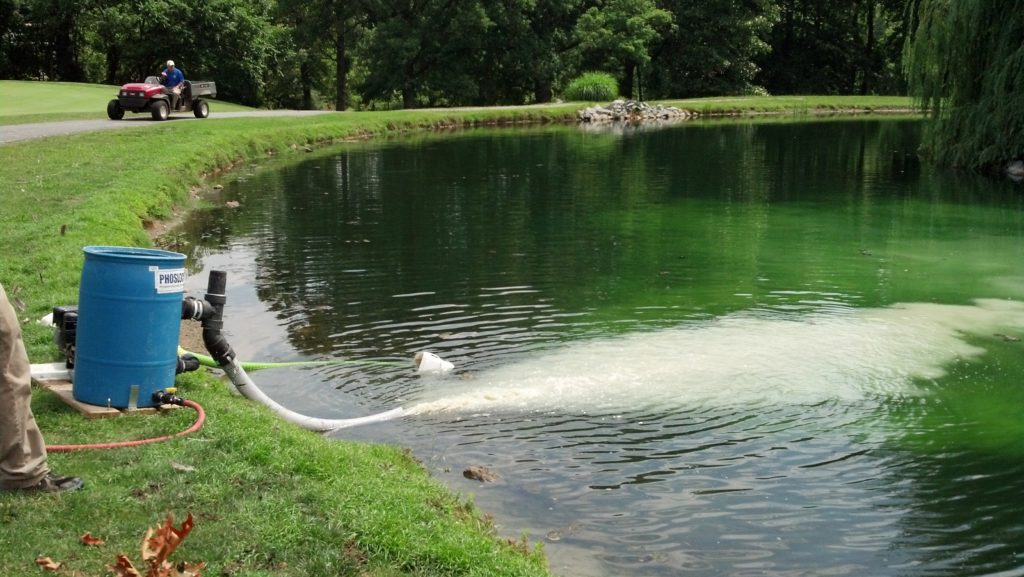
How To Naturally Improve Algae Control In Ponds
Pond algae and algae blooms are probably the most common recurring problem for ponds and lakes. Sometimes it seems that they appear out of nowhere, especially as the temperatures begin to rise. Eliminating and preventing an algae bloom can seem like an impossible task and can be very frustrating. Sometimes, they seem to keep reappearing no matter what action is taken. Treating and preventing algae blooms can be a daunting experience, however, there are several ways to reduce the frequency and severity of an algae bloom.
Like all plants, algae feed on nutrients, primarily phosphorous and nitrogen. Most ponds, especially stormwater ponds, are nutrient sinks, meaning that nutrients from the surrounding watershed typically collect in them. These nutrients come from a variety of sources such as soil, fertilizer, and animals. Because of this, ponds become eutrophic, or nutrient rich. These nutrient rich bodies of water are susceptible to continual algae blooms because the algae have a never ending supply of food.
- Algae Control


One of the best ways to slow down the growth of algae is to attack it at its food source – the nutrients. Nutrient management can be accomplished in several different ways. One way is by introducing beneficial bacteria and enzymes to your pond through biological augmentation. The bacteria help speed up the decomposition process and consume some of the nutrients that would otherwise be sequestered by the algae. They also help reduce the sludge and muck, where nutrients are often stored, that accumulates in a pond and will help to clarify the water. Another way is to add pond aeration systems which can be accomplished with a decorative fountain or submersed aeration. Having a well-aerated pond will increase the dissolved oxygen, which in turn will help the decomposition process, lessening the nutrient load in the pond. Having proper pond aeration will also reduce the likely hood of fish kills.
One could also plant beneficial vegetation in and around the pond. There are many added benefits in doing this. Plants will act as sponges, absorbing many of the nutrients in the pond for their own growth. They also help stabilize the shoreline which will help prevent erosion. Shoreline vegetation will help shade the shallow areas where many algae problems begin. The plants will provide habitat for numerous critters including dragonfly larvae and adults, which are voracious mosquito eaters. Many of these plants have beautiful, showy flowers and can be easily maintained. Having a well-manicured buffer will also discourage geese from frequenting your pond. So as you can see, including a nice, maintained vegetative buffer provides numerous benefits.
There are products on the market that focus on reducing the nutrient load in the pond. Some of these nutrient management products will bind to the various free-floating particles in the pond, many of which are loaded with nutrients. This also helps to clarify turbid waters. There is even specific phosphorus binding mineral available, called Phoslock, which is comprised of a unique lanthanum modified clay for phosphorus binding. Phosphorus is the nutrient used most by algae. This mineral specifically binds to only phosphorus and permanently “locks” it up, preventing it from being used by algae. It will also bind to the phosphorus that is found in the sediment. With this mineral it is possible to “reset” the body of water to its original state with very low amounts of nutrients.

Stocking the pond with fish, such as tilapia, will also help to reduce the amount of algae in the pond. Tilapia will consume algae; however, even a pond full of tilapia will not consume all of the algae in the pond. Keep in mind that tilapia are warm-water fish and will die off during the winter when the water temperatures drop, so restocking would be necessary. Tilapia are not legal to stock in some states so be sure to consult with a Fisheries Biologist to find out what the regulations are for your area.
Of course, there are a whole slew of algaecides on the market. These algae elimination products do work wonders and will curb your current algae problems. However, directly treating algae is just treating a symptom of the problem and not the problem itself. The majority of the time, it is necessary to use an algaecide to temporarily kill an unsightly algae bloom but this method will not permanently dispose of algae. Unfortunately, there isn’t a “magic pill” that will 100 percent eradicate algae forever. As algae die and decompose, it will release the nutrients that it has been using back into the waterbody. These nutrients will eventually fuel yet another algae bloom and the process will start all over again. Using algaecides is necessary to treat the flair-ups but attacking the algae at its source is the only way to reduce the frequency of flair-ups.
Every waterbody is different. Algae control methods that work in some ponds will not work in every pond. Most of the time, employing several of the mentioned tactics is necessary to gain control of pond algae problems. One also has to be patient, as it might take some time to gain full control of the algae problem. Ponds do not have to be problematic! With the right techniques, algae problems will become an afterthought.
SOLitude Lake Management is an environmental firm committed to providing full-service solutions that improve water quality, preserve natural resources, and reduce our environmental footprint. Our services include lake, pond, wetland, and fisheries management programs, algae and aquatic weed control, mechanical harvesting, hydro-raking, installation and maintenance of fountains and aeration systems, water quality testing and restoration, bathymetry, lake vegetation studies, biological assessments, habitat assessments, invasive species management and nuisance wildlife management. Services, consulting, and aquatic products are available to clients nationwide, including homeowners associations, multi-family and apartment communities, golf courses, commercial developments, ranches, private landowners, reservoirs, recreational and public lakes, municipalities, parks, and state and federal agencies. Learn more about SOLitude Lake Management and purchase products at www.solitudelakemanagement.com









